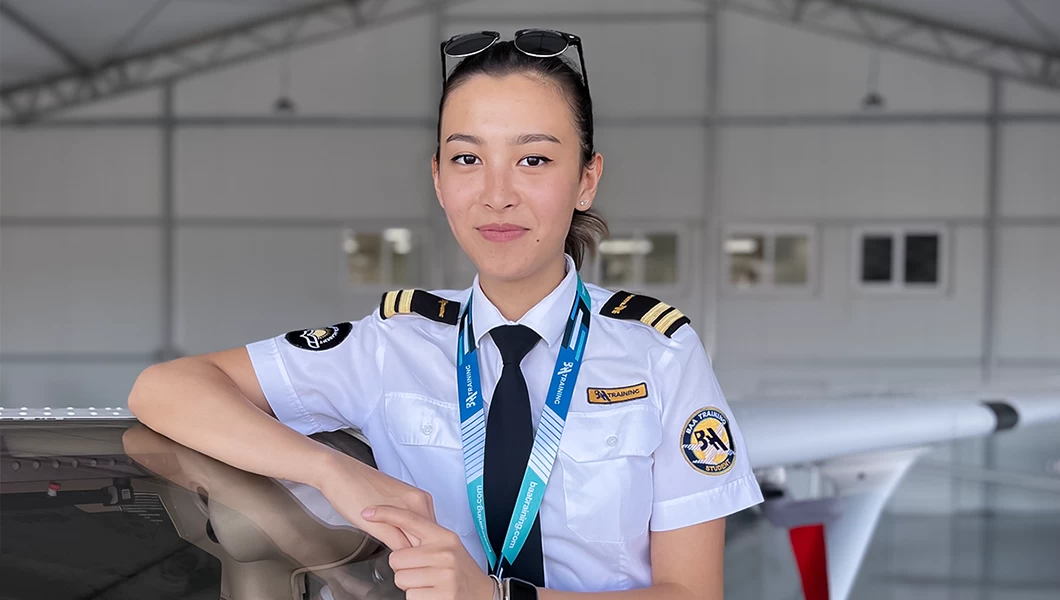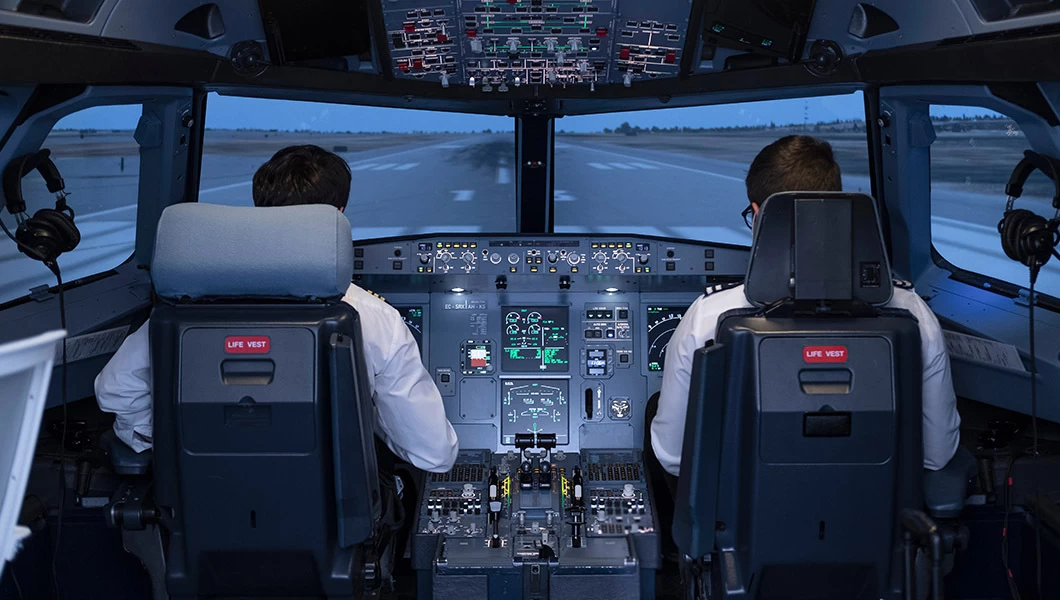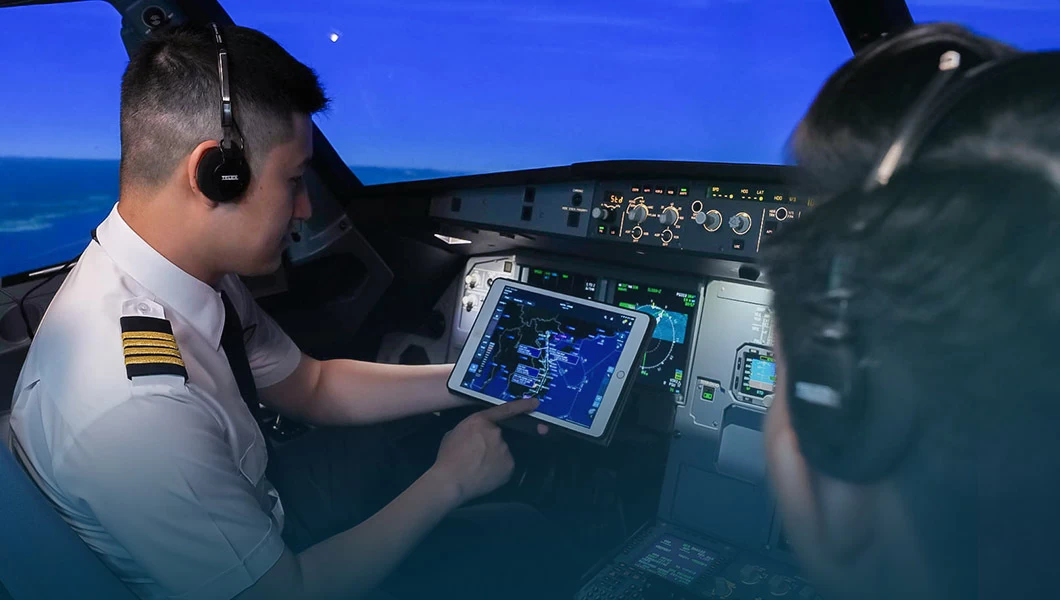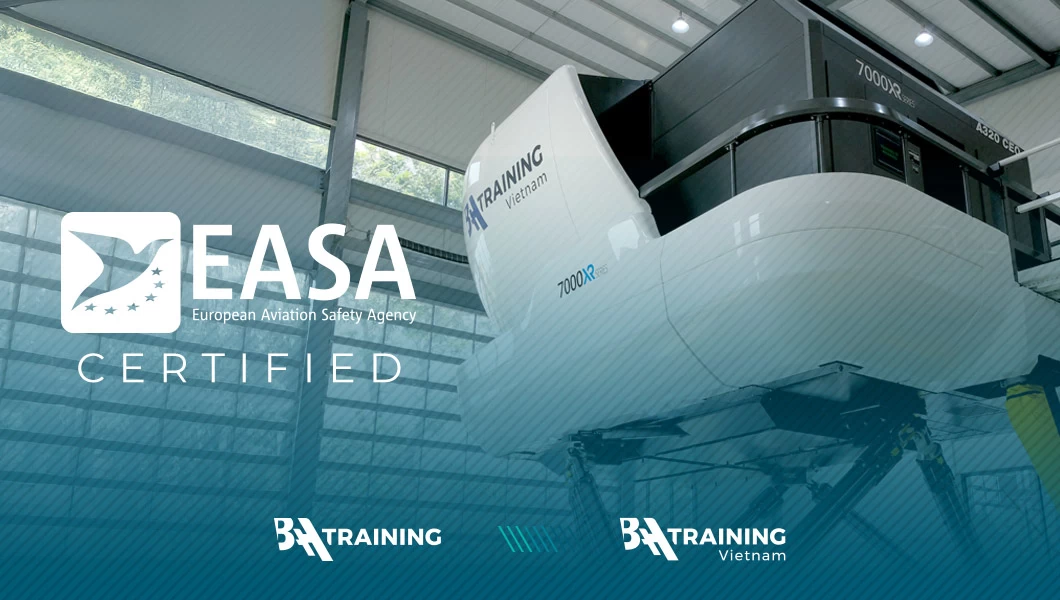If you’ve ever asked yourself any of these questions, you’re in the right place. This guide demystifies the different types of pilot licenses on offer, clearing up your options as you make the choice that launches your future career.
Prefer to listen? Press play to hear this article.
MPL – Multi-Crew Pilot License
The new kid on the block (having first been developed in 2006), an MPL qualifies you as a First Officer right off the bat, entitling you to occupy the cockpit alongside another operator. While this form of license isn’t as commonly known as the CPL, its growing popularity is making it an increasingly attractive choice for prospective pilots.
MPLs are also usually tailored towards working for a specific airline, building the pilot’s competence in a more regimented way than the broader-spectrum CPL via an ATPL Integrated program. That’s not to say that MPLs are restrictive – far from it – and there are a host of other advantages besides:
Head for the simulator
The heavy focus on simulator training in most MPL programs (at BAA Training, for example, students spend 60% of the total program time on simulators) creates future pilots who are safety-conscious and ready for any emergency. Practicing drills that can’t be conducted on real aircraft is a key advantage of this method of instruction, and it’s all the more effective when delivered by airline-specific instructors with a wealth of experience, such as those at our training centers.

Save time
Because you’re only learning the ins and outs of one airline’s standard operating procedures, your training regimen is streamlined, resulting in significant time savings.
Enjoy a job guarantee
The cheek-by-jowl nature of airlines running their own MPL training schemes means that you’re learning exactly what it takes to get a job after graduating, and MPL partner schemes even come with guaranteed job placements (please refer to Pilot Runway to learn more). No sooner have you earned your wings than you’re taking home your first salary, making this a great way to get stuck into the industry as soon as possible.
Build a broader skillset
The role of a First Officer isn’t just mechanical – it involves coordinating with a broad group of crew members and managing the resources they bring to the table. Therefore, the development of Non-Technical Skills (NTS) and Competency-Based Training (CBT) to enhance resilience in high-pressure situations while simultaneously developing the right skillset required for modern commercial aviation is a top priority of MPL training.
CPL and ATPL – Commercial Pilot License and Airline Transport Pilot License
The traditional route to becoming a First Officer in aviation is through the CPL. Modular (stage by stage) and integrated (intense, uninterrupted learning) pathways are available, all leading to the same CPL with a frozen ATPL theory, which can be unfrozen after accumulating at least 1500 flight hours or according to company policy (making you eligible to become a Captain). This is the point at which you reach your highest-level license – the full ATPL.
The following are key advantages of the CPL:
Broad-spectrum
Similar ARTICLES
The more general nature of a CPL entitles pilots to work across a range of airlines, giving them more freedom in seeking jobs on graduation, albeit with the drawback that they’re entering a highly competitive market and lack the security of an MPL partner program.
PPL-inclusive
The more comprehensive nature of integrated ATPL programs means that after attaining your CPL, you’ll also attain a PPL – a private pilot license (which is not the case for MPL students).
Hands-on experience
Unlike students in simulation-focused MPL training schemes, those pursuing a CPL spend significantly more time flying real aircraft. While simulators offer a realistic taste of airline operations with identical cockpits and procedures, flying an actual aircraft highlights the weight of a pilot’s responsibility, making the real-world impact of every decision more apparent.
Your PILOT CAREER
starts with a first click

Enjoy a conditional job guarantee
ATPL Integrated training through a cadet program, for example, can offer a job guarantee, similar to MPL, where you’re tied to an airline from day one. However, for CPL license seekers, it is often more of a conditional job guarantee, depending on factors like performance and available positions, while MPL provides more immediate job security.
Summary of available paths for pilots
It might all sound a bit confusing by now, so let’s break it down step by step! The typical progression is as follows: initial training, CPL license issuance, followed by a Type Rating (that you purchase separately) to operate a large airliner like the A320 or B737, Base Training, and finally, a First Officer position.
Alternatively, all the above can be completed as a pack within a cadet program, even giving you a conditional job guarantee.
Another option is to pursue an MPL cadet program, where initial and Type Rating courses occur in phases, ultimately resulting in an MPL license and a firm job placement within a particular company.

So, which type of pilot license is right for you?
When deciding which type of pilot license to pursue, the answer ultimately depends on your personal priorities and goals. If job security and being tied to a particular airline from the start are your top priorities, an MPL program might be the best choice for you. However, a CPL can also offer similar benefits, depending on the route you take.
If gaining hands-on flying experience at the PPL level is important to you, you might consider a modular CPL route, where you earn your PPL first and then progress through the training. This approach allows you to explore whether flying is truly your passion before committing to further training. Sometimes, you might discover that what you initially thought you wanted isn’t what you truly desire, and starting with a PPL could give you the clarity you need.
Not only should you analyse how each program is structured, but you should also ask yourself a few key questions: What airline do you want to fly for? Where do you want to be based? What is your long-term career vision? It’s also crucial to compare the costs of different programs, as they can vary significantly, and consider whether the financial investment aligns with your career goals.
Once you’ve reflected on your priorities and compared the different options, you’ll be in a better position to make an informed decision that caters to your aspirations.
















